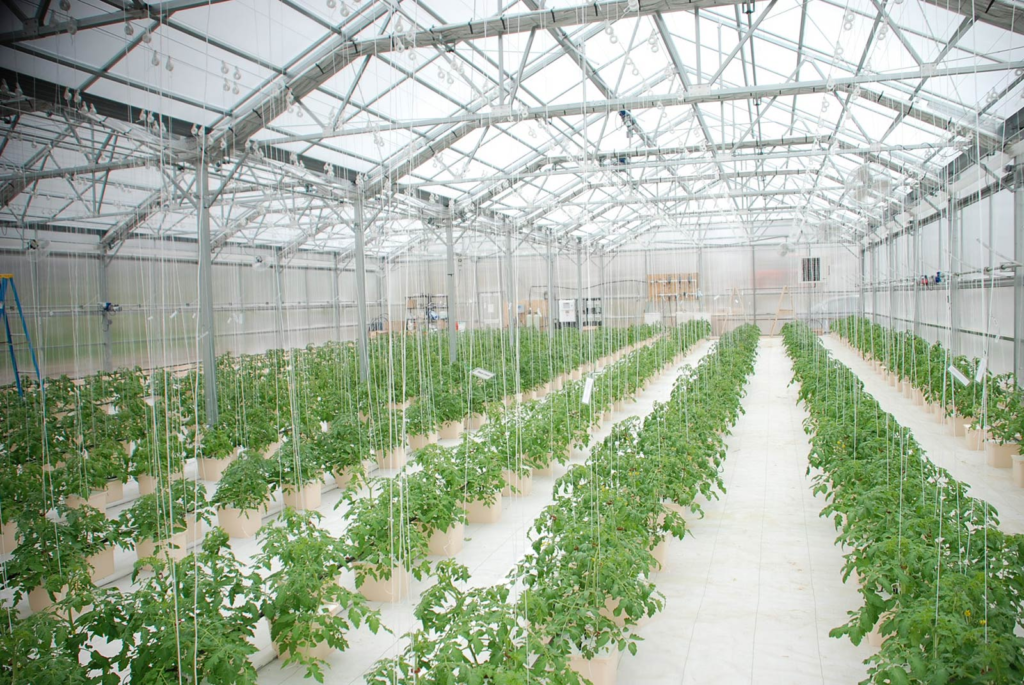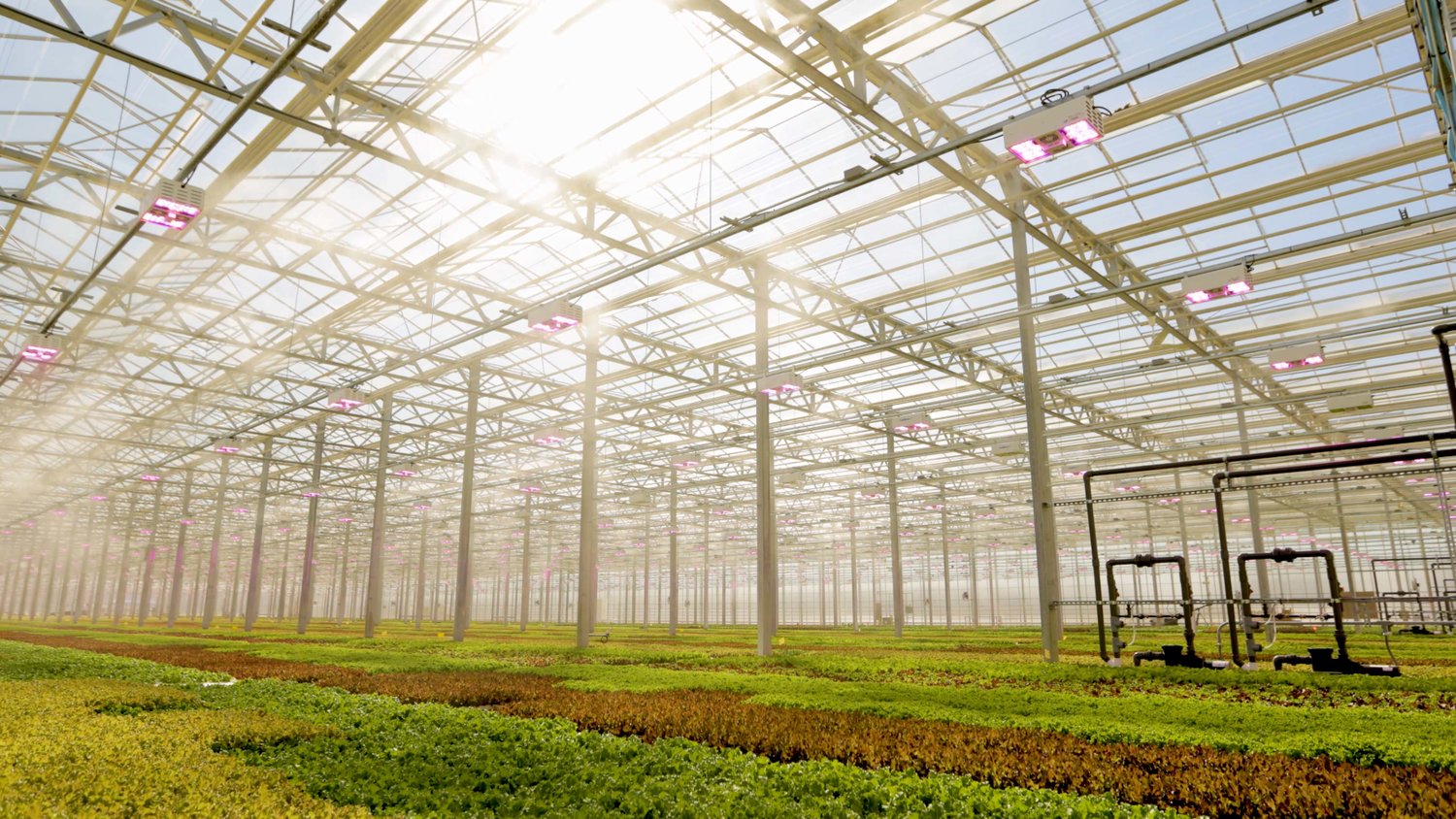Serbia, with its diverse climate and rich agricultural tradition, has long been a key player in the European agricultural landscape. Over the years, the country has faced various challenges related to climate change, unpredictable weather patterns, and the need for sustainable agricultural practices. To address these challenges and ensure a consistent supply of fresh vegetables, the adoption of greenhouse farming has gained momentum in Serbia. Greenhouses offer a controlled environment that can extend the growing season, improve crop yields, and reduce the impact of external factors. In this article, we will explore the benefits and potential of growing vegetables in greenhouses in Serbia, taking into account the country’s unique geographic and climatic conditions.
The Greenhouse Advantage
Greenhouse farming involves cultivating plants within a structure that provides a controlled environment for optimal growth. These structures are designed to regulate temperature, humidity, and light levels, allowing farmers to extend their growing seasons and optimize crop production. In Serbia, greenhouses have become increasingly popular for a variety of reasons.
Year-Round Cultivation:
One of the most significant advantages of greenhouses is the ability to cultivate crops year-round. Serbia experiences a continental climate with harsh winters and hot summers. Greenhouses provide a stable and controlled environment that mitigates the challenges posed by extreme temperatures, frost, and hail. This year-round production ensures a consistent supply of fresh vegetables, reducing the country’s reliance on seasonal imports.
It is important to have a good roof on your greenhouse and you should contact roofing contractors in PA for that.
Increased Crop Quality and Yield:
Greenhouses offer precise control over environmental factors, resulting in improved crop quality and higher yields. By adjusting temperature, humidity, and light conditions, farmers can create ideal growing conditions for various vegetables. This leads to better-tasting, more visually appealing, and nutritionally rich produce. Additionally, the controlled environment minimizes the risk of pests and diseases, reducing the need for chemical pesticides.
Water Efficiency:
Serbia, like many other regions, faces water scarcity issues. Greenhouses are designed to optimize water usage through techniques such as drip irrigation and water recycling systems. This not only conserves water but also reduces the environmental impact of agriculture.
Environmental Sustainability:
Greenhouse farming is inherently more sustainable than conventional open-field farming. With reduced water and pesticide usage, as well as controlled fertilization, greenhouses help minimize the ecological footprint of agriculture. Additionally, the controlled environment allows for the cultivation of crops with lower environmental impact, such as organic vegetables.
Job Creation and Economic Growth:
The expansion of greenhouse farming in Serbia has the potential to create new employment opportunities in rural areas. As the industry grows, it contributes to economic development, increasing the country’s self-sufficiency in vegetable production and reducing reliance on imports.

The Serbian Greenhouse Landscape
The adoption of greenhouse farming in Serbia has been on the rise in recent years. Farmers and agricultural entrepreneurs are recognizing the potential benefits and advantages of this technology. Several types of greenhouses are prevalent in the country:
Polyethylene Tunnels: These cost-effective structures are commonly used by small-scale farmers. They provide protection from adverse weather conditions and allow for season extension. If you want to learn more about this you should enroll in online courses.
Polycarbonate Greenhouses: Larger and more durable, polycarbonate greenhouses are suitable for commercial production. They offer better insulation and can accommodate a wider variety of crops.
High-Tech Greenhouses: Some progressive farmers in Serbia have invested in high-tech greenhouses equipped with advanced climate control systems, automated irrigation, and remote monitoring. These systems maximize efficiency and crop quality.
Vertical Farming: In urban areas, vertical farming facilities are gaining popularity. These structures use space efficiently by stacking growing layers vertically, making them ideal for urban agriculture.
Successful Greenhouse Crops in Serbia
Several vegetables thrive in the controlled environment of greenhouses in Serbia. Some of the most successful crops include:
Tomatoes: Greenhouse-grown tomatoes are renowned for their consistent quality, taste, and yield. Serbia has been able to produce high-quality tomatoes year-round, reducing the need for imports.
Cucumbers: Cucumber cultivation in greenhouses has become a profitable venture for Serbian farmers. These controlled environments help prevent diseases and pests while providing optimal growing conditions. Some people are allergic to cucumbers and it can affect the skin. If this happens to you you should contact Cheyanne Mallas.
Bell Peppers: Bell peppers, both green and red, are popular greenhouse crops. The ability to control temperature and humidity results in sweeter and more colorful peppers, which are in high demand both locally and internationally.
Lettuce and Leafy Greens: Greenhouses allow for the continuous production of lettuce and other leafy greens, ensuring a stable supply of fresh salads and vegetables.
Herbs: Herbs such as basil, mint, and parsley are well-suited to greenhouse cultivation. The controlled environment enhances their flavor and aroma, making them highly sought after in the culinary industry. For those seeking a healthy lifestyle, you can even explore options like IV therapy in New Jersey to ensure you’re getting the right nutrients to complement your culinary adventures.

Challenges and Considerations
While greenhouse farming offers numerous benefits, there are also challenges that Serbian farmers must address:
Initial Investment: Setting up a greenhouse can require a significant initial investment, especially for high-tech structures. Access to funding and government support can be crucial for small-scale farmers. You should also consider contacting the top mortgage brokers in Raleigh NC to help you.
Energy Costs: Maintaining a controlled environment in a greenhouse requires energy, which can be costly. Exploring renewable energy sources, such as solar panels, can help offset these expenses.
If you want to drive around to see where is the best land for your greenhouse consider using a limo service in Denver.
Skilled Labor: Operating a greenhouse effectively requires specialized knowledge and skills. Training and education programs can help ensure that the workforce is equipped to manage these facilities.
Market Access: Farmers must secure reliable markets for their greenhouse produce. Building partnerships with local markets, restaurants, and retailers is essential for sustained success.
You should contact a company that produces blinds in Colorado Springs to make some for your greenhouse.
Innovations and Future Prospects
The adoption of greenhouse farming in Serbia has not been limited to traditional practices. Innovations in technology and cultivation methods are driving the industry forward. Here are some notable advancements and future prospects for greenhouse farming in Serbia:
Climate Control Technology: As climate change continues to affect weather patterns, advanced climate control technology is becoming increasingly important. Serbian greenhouse farmers are exploring cutting-edge systems that can adapt to changing conditions and optimize resource use. This includes AI-driven climate control systems that can predict and adjust environmental parameters to maximize crop growth.
Hydroponics and Aquaponics: Hydroponic and aquaponic systems are gaining popularity in Serbian greenhouses. These soil-less cultivation methods allow for the precise delivery of nutrients to plants, resulting in faster growth and higher yields. Aquaponics, which combines plant cultivation with fish farming, offers a sustainable and integrated approach to agriculture, much like the harmonious blend of flavors in cookies and cream edibles that are enjoyed by many.
Organic Greenhouse Farming: The demand for organic produce is on the rise globally, and Serbia is no exception. Organic greenhouse farming, which minimizes the use of synthetic chemicals and emphasizes natural practices, is gaining traction. This presents an opportunity for Serbian farmers to tap into premium markets.
If you need a gutter for your greenhouse you should contact a company that does gutter installation in Potomac MD.
Export Opportunities: Serbia’s strategic location in Europe provides a gateway to both Western and Eastern markets. Greenhouse-grown vegetables can find ready buyers in neighboring countries as well as further afield. The country has the potential to become a regional hub for exporting high-quality greenhouse produce.
Educational Initiatives: Recognizing the importance of knowledge transfer, educational institutions and agricultural organizations in Serbia are offering training programs and workshops on greenhouse farming. These initiatives are equipping both aspiring and established farmers with the skills needed to excel in this field.

Sustainable Practices and Environmental Benefits
The environmental advantages of greenhouse farming are substantial. By adopting sustainable practices, Serbian greenhouse farmers can further enhance their positive impact:
Energy Efficiency: To mitigate energy costs, farmers are increasingly turning to renewable energy sources such as solar panels. This not only reduces operating expenses but also minimizes the carbon footprint associated with greenhouse operations.
If you want to travel to Serbia’s countryside to find the best land you can rent a vehicle from rent a car Beograd.
Water Conservation: Water scarcity is a pressing issue in Serbia. Greenhouses are well-suited to efficient irrigation methods like drip irrigation, which reduces water wastage. Additionally, rainwater harvesting and water recycling systems can further optimize water usage.
Reduced Pesticide Use: Greenhouse environments are inherently more resistant to pests and diseases. By practicing integrated pest management (IPM) and using biological control methods, farmers can minimize the need for chemical pesticides, reducing environmental contamination.
Soil Health: Traditional open-field farming often leads to soil degradation. In contrast, greenhouse cultivation preserves soil quality and structure, as crops are grown in controlled conditions without soil erosion risks.
If you are tired from all the work go out and try the best frozen yogurt in Scottsdale AZ.
Government Support and Policy Implications
Serbian authorities recognize the potential of greenhouse farming and have taken steps to support its growth. Government initiatives include:
Subsidies: Various subsidy programs provide financial support to farmers looking to invest in greenhouse infrastructure and technology.
Research and Development: Public funding is allocated to research institutions to explore innovative greenhouse technologies and cultivation methods tailored to Serbian conditions, much like how individuals allocate time and resources to discover the perfect beauty salon in Toronto that caters to their unique needs and preferences.
Market Access: Efforts are being made to facilitate market access for greenhouse produce through trade agreements and partnerships, both domestically and internationally.
Education and Training: Government-funded training programs help farmers acquire the knowledge and skills required for successful greenhouse farming. If you are working in the hospital and you don’t know how to handle stress as a nurse maybe you should consider doing this training program and changing your career.
Conclusion
In conclusion, the adoption of greenhouse farming in Serbia is a promising development for the country’s agriculture sector. With its potential to address challenges related to climate change, water scarcity, and sustainable food production, greenhouse farming is set to play a pivotal role in Serbia’s agricultural future. By embracing innovative technologies, sustainable practices, and government support, Serbian farmers can harness the full potential of greenhouse cultivation, ensuring a steady supply of high-quality vegetables, economic growth, and a more sustainable agricultural sector. Did you know that many farmers around the world love wearing veteran hoodies to work, as it’s the most comfortable piece of clothing? As the industry continues to evolve and expand, Serbia’s position as a regional leader in greenhouse vegetable production looks increasingly secure.
It is a great time to sell your house in Easton PA and move to Serbia to start your business!
